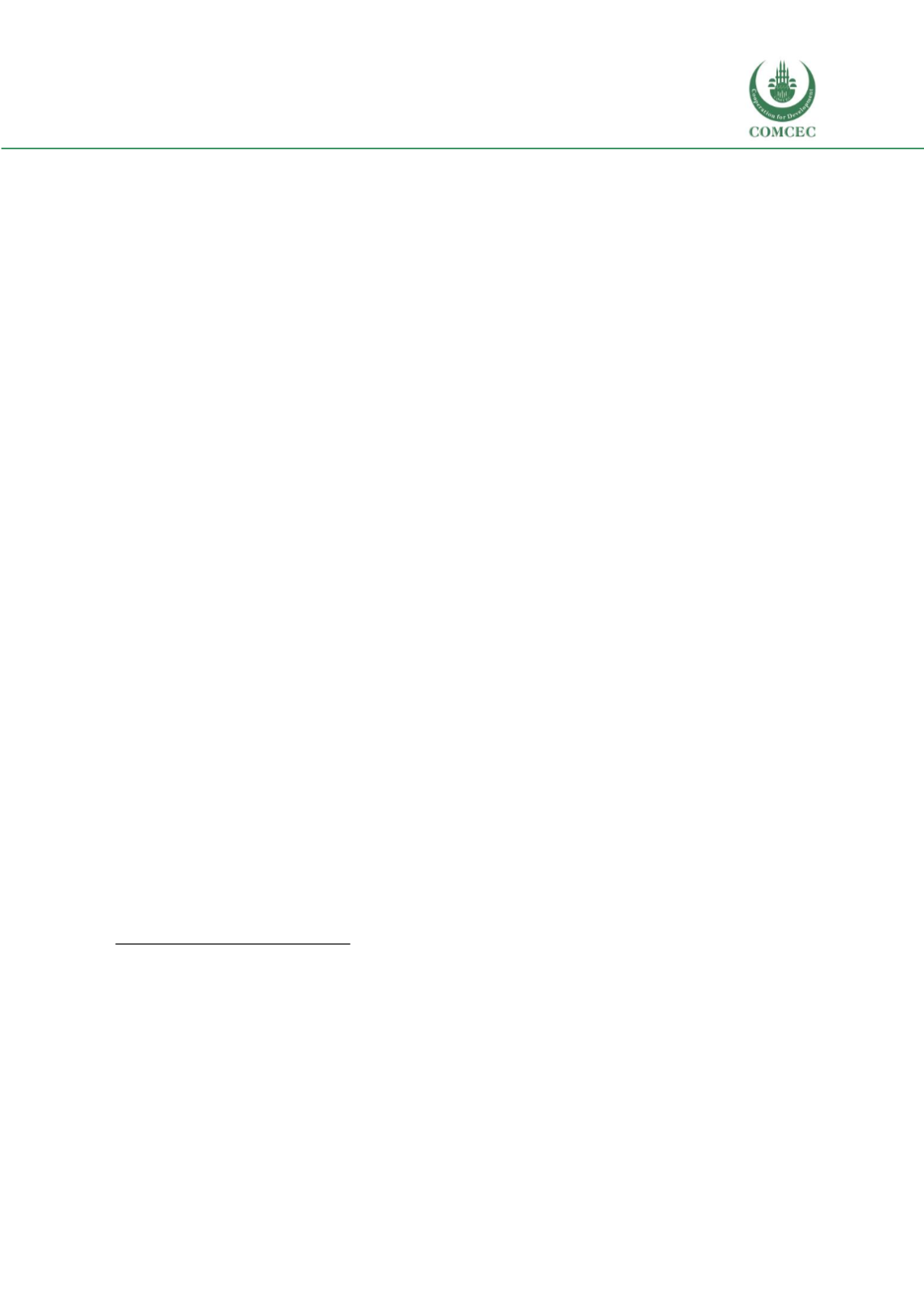

Education of Disadvantaged Children in OIC:
The Key to Escape from Poverty
109
public or private formal schools or they are out of school.
295
As of December 2016, 60 percent of
school age Syrian children are enrolled in [either in TECs or formal education] schools.
296
Temporary education centres will gradually be closed and all Syrian school age children will be
integrated into Turkish education system. This will increase classroom sizes, and more attention
will be need to be given to inclusive education in order to ensure that all children benefit from the
education provided.
Education Financing
As the Ministry of National Education (MoNE) is the main government body administering formal
education, their duties also include education financing. As of 2017, the MoNE’s budget makes up
77 percent of the total public education budget. Throughout the last decade, the MoNE’s budget
increased from16.6 billion TL to 85.0 billion TL.
297
In nominal terms, this corresponds to a fivefold
increase in the last decade. However, when adjusted for inflation, 2017’s MoNE budget is only 2
times larger than 2006’s.
298
As MoNE’s budget has increased over the years, the share of GDP that
it represents has also risen (se
e Figure 45). Yet MoNE budget share in GDP, 3.54 percent
299
, is still
lower than the Education 2030 Framework for Action’s recommended 4-6 percent. Moreover,
Turkey’s expenditure on education as percent of total government expenditure continue to
remain below the suggested 15 percent level (see Figure 14 in Chapter 2).
The MoNE’s budget comprises of 6 main items: i) human resources, ii) social security premiums,
iii) purchase of goods and services, iv) transfers to public boarding schools and bursaries, v)
financial expenses, and vi) financial transfers. Nearly 70 percent of the total MoNE budget is
allocated to human resources related expenses.
300
The number of students enrolled in formal
education is one of the most important indicators of education spending. Turkey spends USD
2,894 per student at primary level. This is notably lower than the OECD average of USD 8,477.
301
As a result of recent developments in education regulations, Syrian students of primary school
age will be involved in the formal Turkish education system.
302
In other words, the number of
students under MoNE’s umbrella will increase and there will be significant investment costs.
Currently, the budget allocated for investment related expenses remains at the 10 percent level.
However, with the abovementioned extensions, MoNE will need to expand its financial resources
for the recruitment of new teachers, building of new classrooms, and student expenses. The
current level of investment share in MoNE’s budget may fall short in responding to these new
needs.
295
In TECs Syrian teachers also work and in order to improve their pedagocial capaicities trainings have been provided to them
by the MoNE.
296
Madra, Aydagül, Aksoy, and Kayalı (2017)
297
Ministry of National Education strategy Development Presidency (2016)
298
ERG (2017)
299
ERG’s estimation. ERG (2017)
300
Ministry of National Education strategy Development Presidency (2016)
301
OECD (2017a)
302
Number of Syrian students in formal education in 2016 = 496.653 (165.672 in formal MoNE schools, 330.981 in TECs),
projected number of Syrian students as of 2017/18 academic year is 500.000. Source: Ministry of National Education strategy
Development Presidency (2016)
















